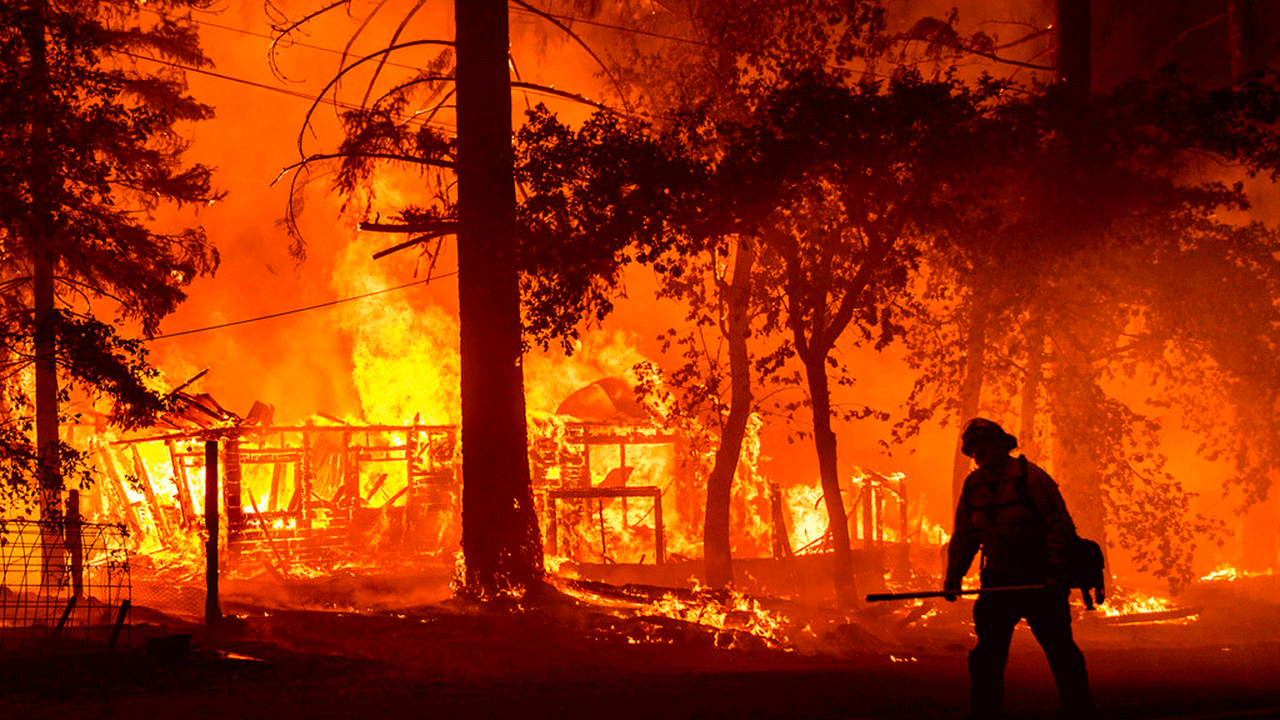Fox News Flash top headlines for July 28
Fox News Flash top headlines are here. Check out what's clicking on Foxnews.com.
As wildfires continue to threaten the western U.S., eastern states are once again under air quality alerts due to plumes of smoke traveling across the country.
According to the National Interagency Fire Center, as of Wednesday, 81 large fires currently ablaze have scorched 1.6 million acres across 12 states.
WESTERN WILDFIRE BATTLES AIDED BY WEATHER BUT LOSSES GROW
The organization noted that there are more than 21,400 wildland firefighters and support personnel working to put out the fires.
Images taken from inside the effort showed raging infernos scorching trees and structures against dark orange skies.
Oregon's Bootleg Fire, which has burned more than 413,000 acres, has created its own weather – generating a pyrocumulus "fire cloud" extending upward to 30,000 feet.

In this Saturday, July 24, 2021, file photo a firefighter passes a burning home as the Dixie Fire flares in Plumas County, Calif. The fire destroyed multiple residences as it tore through the Indian Falls community. (AP Photo/Noah Berger)
Smoke pumped into the atmosphere from these fires – as well as wildfires in Canada – has affected cities on both coasts, forcing air quality warnings and advisories.
Places with air pollution challenges saw conditions worsen, leading to potential health-related consequences.
Officials warned that particulate matter pollution could be unhealthy for groups including sensitive individuals, small children, seniors, pregnant women and anyone with cardiovascular and respiratory problems like asthma or lung disease.
Residents were advised to decrease exposure and spend time indoors, though those in the thick of it could also be in danger from other chemicals as communities go up in flames.
HEAT WARNINGS, ADVISORIES BLANKET MOST OF CENTRAL US
As climate change exacerbates extreme weather, worsening the West's historic drought, wildfires have been harder to fight and smoke pollution events have increased.
The 2020 wildfire season was historic, with more than 10 million acres burned – more than 4 million of which were in the state of California.
While "PBS News Hour" reported Tuesday that there is not enough data on the effect of wildfire smoke to human health, doctors in California linked smoke pollution to a negative long-term impact on human health.
This year's North American monsoon season has slightly helped relieve drought in the Southwest, but storms have brought lightning strikes in addition to hazardous flash flooding and mudslides.
Lightning strikes set two of California's biggest fire complexes ablaze last year and this year – the almost 69,000-acre Tamarack Fire was sparked in the parched wilderness by lightning south of Lake Tahoe.
According to the National Weather Service, isolated storm development is forecast Wednesday for higher terrain in central Idaho and western Montana.
CLICK HERE FOR THE FOX NEWS APP
Elevated fire weather conditions are expected as dry and breezy conditions pick up winds over the northern Plains.
Excessive heat is covering much of the central third of the country and is expected to persist into the weekend over south-central states.
The Associated Press contributed to this report.



